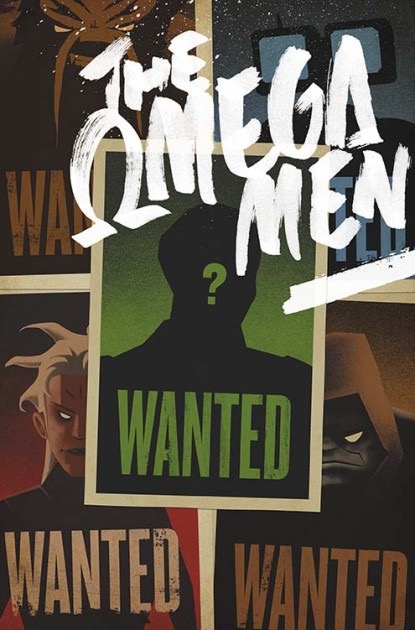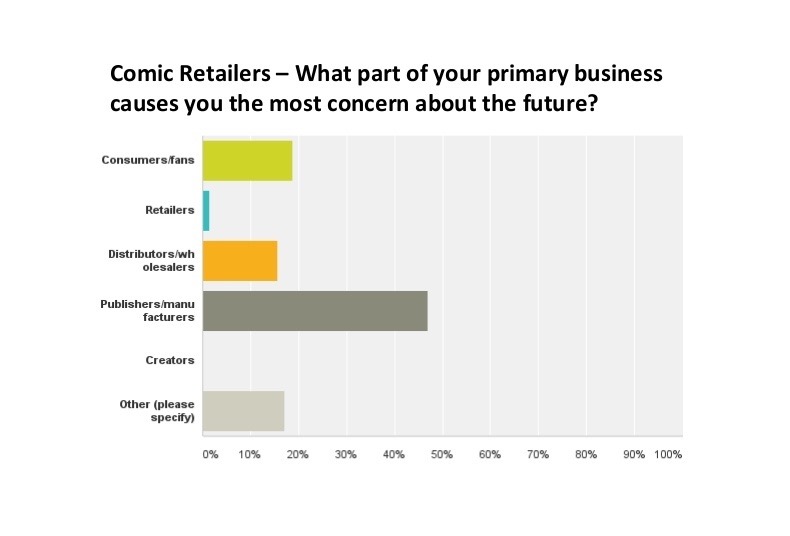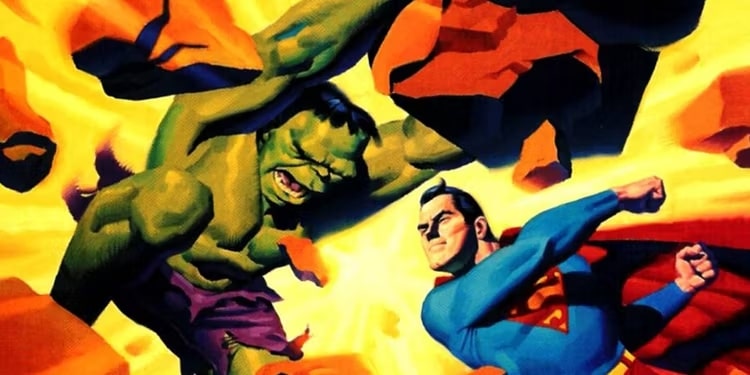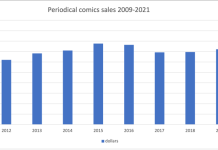2015 was a great year for comics, but comics sales were generally up in single digits, which is not a bad thing, but less growth than before. There have been many “storm on the horizon” type analyses, with Todd Allen summing up many of the existing risk factors. Recently retailer Brian Hibbs served up a heaping helping of the usual suspects for slower growth ahead and added a fine sauce of nagging private retailer concerns. Among the usual suspects: DC’s dismal relaunch and Marvel’s frantic renumbering crusade, neither of which seems entirely built for the long haul.
Hibbs, who owns two shops on San Francisco, reports that his November sales were down for the first time in seven years. The drop was only 4% but still…the holidays should see steady sales not lowered sales. He’s also skeptical that Marvel’s youth move is really catching on:
How about the new and young readership? Marvel actually was starting to attract some of them at our stores — books like “Squirrel Girl,” “Ms. Marvel” and the Jane Foster “Thor” title were racking solid sales for us outside of the “traditional” Marvel customer. But that new/younger readership? They literally don’t understand why you would start a book over again at #1. It makes no sense to them! And that confusion appears to have shooed a number of them off. In an equivalent sales period, our sales of the first issues of all of those series are actually below (dramatically so in the case of “Thor!”) the final issues of the “old series” — which was only on issue #8 for two of the three! But readers appear to be treating the relaunches as simply “issue #9.” That’s not typical consumer behavior.
Hibbs is usually the most vocal proponent of retailing caution, but his worries seems to be shared by others:
And I hear similar things from many other retailers — the “word on the street” from a wide swath of stores is that a vast indifference has begun to creep in among the readers of superhero comics, and that this miasma is softening the 4th quarter enough to potentially threaten these stores. This is scary because an enormous amount of stores in the market don’t really have a fall-back position from “we sell superhero comics.” As the old saying goes “They carry both kinds of comics: Marvel and DC!” Which puts you in a bad position if both companies are underperforming at the same time.
What he’s hinting at is kind of the unthinkable doomsday scenario that we’ve been talking about for years: a world where the Big Two are just two more publishers. While proponents of comics diversity (including myself) may think this is a great thing, the reality is that the vast majority of comics shops rely on the weekly traffic of Big Two readers to stay in business, and if they were to vanish over night, that episode of The Leftovers would not be pretty. The closure of high profile alternative stores like Locust Moon and Bergen Street Comics doesn’t exactly bode well for those who have a different product mix.
However, the call to action is just that: shifting priorities.
I would also strongly urge every retailer to take a hard look at what and how you stock, and encourage you to diversify your stock — I think that the market is starting to say that the days of being a “superhero-only” store are beginning to be numbered. But that isn’t a switch that can be made on a dime — moving the direction of your store is a task that is better measured in seasons than weeks. You can’t start early enough.
Call this the “alternative energy” plan for comics. ICv2 just ran a retailer survey that was a bit more optimistic, but acknowledged the problems that Hibbs pinpointed. Retailers have the most confidence in readers and creators, but publishers rank third on confidence and #1 in problems:
Asked what part of their primary business causes the most concern about the future, nearly half of comic retailers chose publishers, the companies that curate, edit, package, market, and in some cases create the content that drives the business. But it was clear what retailers were thinking about the creative side, as not a single respondent chose creators.
There are several informative graphs in the article and much more drilling down, so I suggest you run over and read it.
The lack of faith in publishers is probably continuing unease over Marvel and DC’s shift to purely corporate cultures. It’s obvious to anyone that since the move west DC has become another arm in a huge and oft-times dysfunctional mega-media company. WB doesn’t have a very strong publishing program in place outside of DC, and it’s not even clear to me what the future plan for the company is. Not launching a Supergirl comic when the TV show debuted seems to be the kind of thing a leveraged company would do in a heartbeat; that this little detail escaped the vertical-obsessed bean counters is troubling.) They have a long way to go to catch up with Disney, whose roll-out of the Star Wars publishing plan resembled Hux’s speech to the stormtroopers for ranked organization.
Marvel fits better into Disney’s plans and has adapted better, but its silo-ing away from the film side could have many repercussions yet to be seen.
So yeah, retailers are correct to be worried about The Big Two. Making small comics shops owners happy is no longer a primary concern for them; and it shows. And Hibbs says the first quarter of 2016 looks even more unexceptional, with no big launches and a lack of excitement. Comics has a case of the blahs, it seems; how much damage they will so will be the big story for a few months at least. BUT the glass is far from half empty. See the NEXT next story!










“Hibbs, who owns two shops on San Francisco, reports that his November sales were down for the first time in seven years. ”
QUARTERS, not years!!
-B
Yeah, Brian, your comment on Marvel succeeding in attracting new readers and the, wanting them to, right away, understand those weird renumbering/relaunch habits…
That said, if marvel do like they previously did with Hawkeye, the paperback readers won’t see the change, as the paperback will continue with their usual numbering. And a lot of those new readers are probably paberback readers, right?
“And a lot of those new readers are probably paberback readers, right?”
Some are, others absolutely are not — I see new 20 something readers in my store ALL OF THE TIME, and, yes, MOST OF THEM are getting *hooked* on the periodical comic. They like trades very very much, but the things that turns them into FANS is the motivation to buy a new dream fifty-two weeks a year.
-B
“Not launching a Supergirl comic when the TV show debuted seems to be the kind of thing a leveraged company would do in a heartbeat; that this little detail escaped the vertical-obsessed bean counters is troubling.)”
The bean counters probably looked at the The Flash Season Zero and Arrow Season 2.5 comic books, and figured the costs associated with regularly publishing something similar for Supergirl was not worth the investment. The Flash and Arrow companion comic books never really sold all that well.
The constant reboots with #1’s, the huge DC/Marvel universe altering mega-events, and the constant reinventing of traditional characters in the interest of diversity is what is killing the industry. I walked away from Marvel super hero books shortly before the most recent Secret Wars mini-series. The only one I still read is Spider-Woman because it is fun and interesting. It doesn’t take itself too seriously and is not deeply intertwined with 500 other Marvel titles. If it gets to that point I will drop it immediately. The only other Marvel books I read are Darth Vader and Star Wars. The rest of my regular titles are DC and Independents (Dark Horse, IDW, Boom!, and Dynamite.) DC is my favorite publisher and I really like what they are doing, although after Convergence things have become a little muddy. Just bring the real Batman and Superman characters back and all will be forgiven.
All the publishers need to just let series get into the triple digit issue numbers instead of rebooting every 15 issues for no reason other than to introduce a new creative team. There is nothing wrong with ending a story arc, then coming back the next issue with a new team. And for crying out loud, stop pandering to the diversity crowd. Just let the established characters stay as they were originally. Introduce NEW diverse characters, but leave your bread and butter characters alone!!
The also need to stop with the variant covers. No one, other than market speculators hording them, will miss them.
Finally, how about printing them on traditional newsprint paper like the good old days. Get the price of the books down to $1.99-$2.50 and watch sales soar. Save the premium paper and cover stock for the “prestige format”, limited edition special event books (a la Dark Knight, Killing Joke, etc.)
“The bean counters probably looked at the The Flash Season Zero and Arrow Season 2.5 comic books”
Except there are also regular Flash and Green Arrow books (selling abysmally, but hey, at least they exist). There is no ongoing Supergirl book, period.
@Arcee I don’t mind diversity if it is well executed. With Marvel it just feels like they are throwing everything at a wall to see if it sticks. Additionally the added emphasis on Inhumans in place of the X-Men, Peter Parker mimicking Tony Stark etc the 616 feels more like an AU.
Then stop reading their books so you don’t have to keep whining about them.
@Skottie
We’re here predicting comic sales for 2016 and possible reasons for said sales.
I think the mass interruption of the monthly habit by the big 2, followed by the mostly inferior product, and constant gimmicks/ events have eroded the base to a point that it may not bounce back from. I think the era of industry low monthly floppy sales being the norm may be upon us.
Comments are closed.